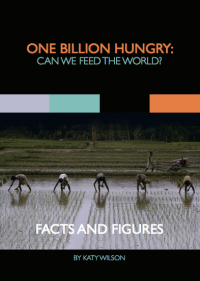 In 2015 the international community will come together to discuss action that needs to be taken to address climate change and global development. The Overseas Development Institute has undertaken research on the impacts climate change will likely have on development efforts and the news is not good.
In 2015 the international community will come together to discuss action that needs to be taken to address climate change and global development. The Overseas Development Institute has undertaken research on the impacts climate change will likely have on development efforts and the news is not good.
The progress the world has made in reducing poverty and hunger, improving access to water and health is at risk of being reversed. Between 1990 and 2010 the number of people in poverty declined by 700 million but many face the risk of falling back into poverty under conditions of climate change. As sea levels rise, temperatures increase and more frequent extreme events occur crops yields will decline and whole areas important for agriculture, many heavily populated, such as deltas in Bangladesh, will be lost. In Africa, crop yields are projected to be reduced by some 90% by 2080 and wheat production will disappear altogether. These changes to agricultural productivity are estimated to increase food prices, increase hunger (by an estimated 250 million people) and exacerbate poverty. Meeting the needs of a growing global population is an urgent challenge made significantly harder by these projected productivity declines. A 55% increase in global crop production would be required to meet increasing global population demand by 2030. By 2050 to 2100, an additional 165,000 to 250,000 children could die each year compared to a world without climate change.
Access to drinking water, which has been improved for some 2.1 billion people in the world in the last 20 years, will become more of a challenge. In Africa 350 million to 600 million people will be exposed to water stress by 2050. An extra 2.5 billion people will be at risk of dengue fever and an extra 40 to 60 million people in Africa alone will be at risk of malaria under climate change. Migration will also increase and by 2100, it’s estimated that climate change will cause annual economic of losses of between 5 and 20% of global GDP.
Much hope for the future rests on agreements met by the international community at the next Conference of the Parties in Peru of the United Nations Framework Convention of Climate Change, which celebrated its 20th anniversary last Friday, and in the Post-2015 development agenda. Mitigation is urgently needed if temperatures are kept below a 2C threshold, we are currently on a trajectory that will see far higher temperature increases, as too is adaptation, since we are committed to some degree of impacts of climate change.
A recent report explored options for how climate change could be included in the post-2015 agenda, in particular through mainstreaming climate change amongst all development goals or having a standalone climate change goal. How climate change will be addressed is important. That it will be addressed is vital, to the health, wealth, welfare and survival of people around the world.









